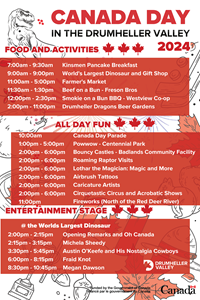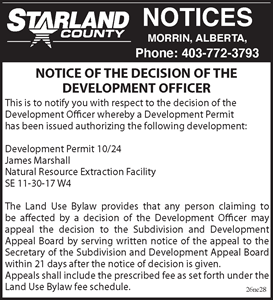
A small but dedicated group gathered on Sunday to remember those who worked in the dark, and those who died in the mine.
The annual May Day Miner Memorial March went on May 1. About 50 marched from the Badlands Community Facility to the Memorial Park beside Drumheller Town Hall. They carried placards naming the mine families of the valley.
At the memorial, a short service was held to remember those who perished. Fred Orosz and Bob Moffatt, a miner and pony driver in his own right, read the honour roll of those who died in the mine.
Moffat recounted the story of one miner, George Brown, whose name appeared both on the Miner Memorial and the Drumheller Cenotaph.
“When the war (WW2) was first declared, many young men who only worked two or three days at the mine would runoff and join the services. Once the government realized they needed extra mine shifts in order to keep the electricity and furnaces going, they started to send some of these men back to the mines,” explains Moffatt. “I don’t know if this happened anywhere else in Canada, but Mr. Brown was sent back to the mines from Calgary. Within a couple weeks of returning to the mines, he was killed. He has the dubious distinction of not only being on our memorial but on the cenotaph.”
Music was part of the ceremony as Marie Russell performed for the crowd.
Following the ceremony attendees had a chance to see some rare mining artifacts. Dylan Zima brought his own personal collection. Zima has a genuine interest in mining history. His great great grandfather Phillip Zima perished in the Caledonian Collieries Mine. His collection includes items that even the Atlas Coal Mine did not contain.
Jay Russell of the Atlas Coal Mine was impressed by Zima’s collection and was happy to see a young man carry on the memories of the mining history.
The Miners Memorial in downtown Drumheller was unveiled in November 2012, and since 2013, May Day festivities have been revived to keep the memory of the valley’s mining history.

























